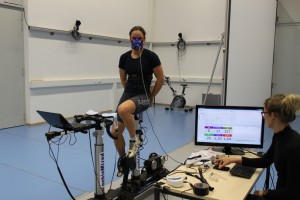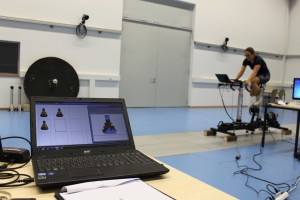In the fitter’s eye
While the individual cyclist is at the heart of each bike fitting, also the fitter has an important part to play in the fitting process. Besides all technology and tools, he is the one translating measurements, angles and observations into changes and recommendations – optimally in close cooperation with the athlete…
For us, this is reason enough to have a closer look at his part:
Matching questions – rightly interpreting answers
The fitter’s task at the beginning of a fitting is to ask the right questions, for example about recent injuries, the sportive goals and the current fitness level. An experienced fitter can already gain important insight from the answers before the actual ‘analysis’ even begins. The answers should decisively influence the dynamic fitting – if they can be interpreted correctly: Indicating the body region that causes problems when cycling helps to choose the correct focus in the movement analysis. Also the question which measurement technique seems appropriate for each fitting can mostly be answered after this interview.
Sensibly using technique: Less can be better
Today many different measurement systems are used in bikefitting, such as scanner, 2D/3D video analysis, pressure measurement, laser, 3D analysis using infrared markers and some more. All these systems produce smaller or bigger datasets in need of analysis. Here, less can sometimes be better: it’s the fitter’s decision which technique (not) to use to answer the open questions. There is always the risk of getting lost in too many data and to lose the ‘red line’ in the fitting process.
The customer as the sum of averages?
The different fitting philosophies that are currently in use can broadly be classified as either dynamic or static bike fitting. Dynamic fitting is the analysis of the human “as close to reality as possible”, that is on the own bike and in motion.
In static fitting, there is mostly a body scan that then serves as the basis for calculating a sitting position, i.e. determining the individual’s ‘fitting’ values from the averages of an existing database. As our customers never are the sum of averages, but possess specific characteristics – such as muscular strength and flexibility – we are advocates of the dynamic approach!
No bikefitting without fitter
Using technology can significantly increase a fitting’s quality. For example, pedal movements can be better analysed when captured on video and played back in slow motion and stress point on the saddle or in the shoe can be exactly visualized using pressure mapping. A great support, as also the eyes of the most experienced fitter cannot capture the whole picture in real time. However, all measurement technique needs the fitter’s interpretation. He needs to analyse the data, draw the right conclusions, put the outcomes and the athlete’s self-information into perspective and combine all this into the correct adjustments. This requires experience and expertise on the fitter’s part!
We frequently read postings like “last week I had a Retül fitting” or “I definitely want to do a BGFit” – which makes us smile. Technology is a tool used by the fitter to make better decisions, technology should never dictate what action a fitter should take.
Author: Daniel Schade




